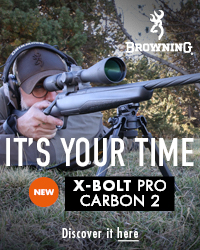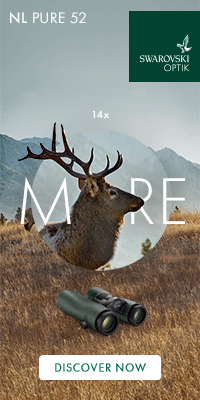Size isn’t everything in the thermal world. This month Dr Simon Lee takes off the apron and enters the high tech world of thermal imaging.
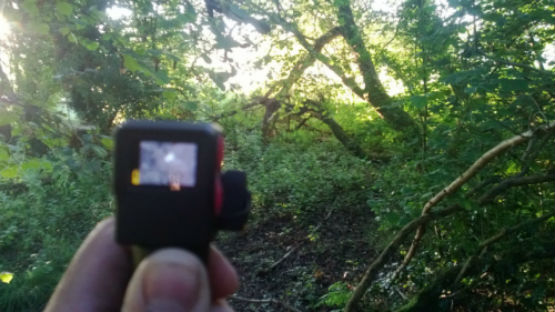
(Above: The heat signature of a Roebuck couched in cover at 30 yards)
Do you remember mobile phones when they first came out? Huge heavy bricks of things with shoulder straps and, like as not, a yuppie trader at the business end. Now, decades later with most of society wandering about with a smartphone clamped to their ear, we are all familiar to some degree with the idea of apps, gps, and roaming wifi. The phones have got smaller, smarter and lighter and the same is true with thermal imagers.
Originally ex-military units were huge units that could in some cases be attached to missile systems for guidance, most were in the form of a bulky binocular style that required both hands and a master’s degree to operate. Enter the T12 family.
I resisted the lure of the first waves of thermal technology as long as I could, but like Canute it wasn’t to last, and the sheer cost of the units was outside my budget. The original FLIR system units from the ‘states seem like a good entry level system but are still quite bulky and just added to the already heavy burden of stalkers kit. Rifle, binoculars, and sticks are the big three, after that the pockets start filling up with buttolo squeakers, knives, first aid kit, lucky charms, thermos flask, hooks, string, gloves, apron, sharpening stone, and before you know it, you are festooned with webbing and rucksack, looking like a Christmas tree of stalking accessories.
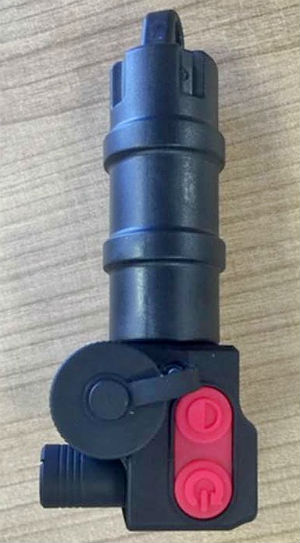 So whatever I chose had to be small, and small it is! The T12-W is tiny with a screen the size of a postage stamp, or 21 x15mm for the numerically minded, and weighs just 64g. It comes in four variants,
So whatever I chose had to be small, and small it is! The T12-W is tiny with a screen the size of a postage stamp, or 21 x15mm for the numerically minded, and weighs just 64g. It comes in four variants,
T12-V
T12-N
T12-M
T12-W
The first two both have a frame rate of 9Hz which can be a little slow to recover if you are swinging to from side to side, the V version has a magnification built into its objective lens so it can detect heat sources out to 150m plus, according to the brochure. The second two have a 30Hz frame rate (unlike a tv picture and other larger TI units which are usually around 50Hz) and the T12-W can detect out to 100m plus, but the key to all these miracle wonders of technology is interpreting the signals from the unit, much like a metal detector, it’s how you read what it’s showing you.
A field test was required, so around 0800 out into the deep bracken went my helper and on went the unit, it has only two buttons so confusion is minimised. The unit boasts four colour palettes, white hot, black hot, night vision green, and a colour mode that looks like something from the film Predator. Needless to say, favouring simplicity I prefer the white hot but at night the green screen mode doesn’t ruin your own night vision too badly.
Out to 125m the unit betrayed my helper as a small white dot, the binoculars then confirmed a head and shoulders, first test complete. Would the unit work as well for deer, essentially a medium sized mammal in a fur coat?
At 75m the unit was able to show white hot dots that stood out from the wheat crop enough to warrant a peer through the binoculars, when spooked and fleeing the screen is fast enough to maintain a lock on them until they vanished at 180m into a wood, second test complete.
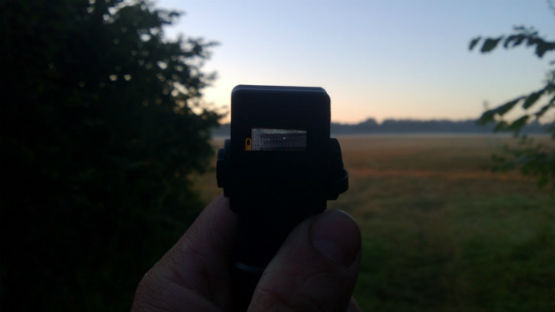 Other wildlife is also identifiable using the unit, foxes in the open look like long low blurs of movement, pheasants appear as spherical dots, and rabbits ears, being well served by hot blood vessels, are instantly identified.
Other wildlife is also identifiable using the unit, foxes in the open look like long low blurs of movement, pheasants appear as spherical dots, and rabbits ears, being well served by hot blood vessels, are instantly identified.
So how does this help us, the deer stalker and vermin controller? Legally, with no shooting allowed after an hour after sunset unless we have a rarely issued night permit, it doesn’t solve the problems we face, but for the stalker in tall crops, lost quarry and poor light it is a godsend.
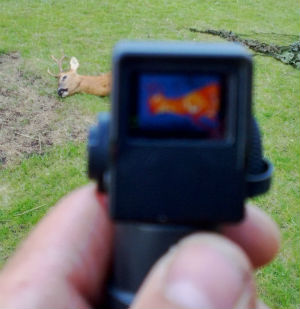 I recently culled a Muntjac who was singlehandedly bringing chaos to a corn crop on one of my permissions, as I approached a camber at 85m just the tips of her ears and rump presented themselves on a scan, lit white. This is where the T12-W comes into its own as it’s the size of a matchbox. With a full sized thermal imager the change back to binoculars then scope costs valuable seconds with lots of harness/strap juggling, the unit can be held in the same hand.
I recently culled a Muntjac who was singlehandedly bringing chaos to a corn crop on one of my permissions, as I approached a camber at 85m just the tips of her ears and rump presented themselves on a scan, lit white. This is where the T12-W comes into its own as it’s the size of a matchbox. With a full sized thermal imager the change back to binoculars then scope costs valuable seconds with lots of harness/strap juggling, the unit can be held in the same hand.
Once spotted through the thermal imager and confirmed with binoculars, a suitable shot presented itself and down she went, down as far as the cornfield she was next to. Hit area showed blood and fur, but not in quantities suggesting a heart/lung shot that usually bowls these smaller deer over. Tracks into the corn confirmed that the Muntjac had been hit and bolted, this is usually where matters get frustrating or expensive, or both. By kneeling down below the initial leaf level of the corn, a white blip was spotted 12m away and lo! There she was, dead as a doornail in a cornrow. Without my tiny gadget a long protracted follow up would have to have taken place.
Contrasts in heat can also produce a better picture, buildings, trees, and exposed earth and rock all radiate and absorb heat differently, car tyres and power lines also carry a unique heat signature and soon you start seeing things mentally in terms of hot and cold, I should imagine this unit is deadly at spotting heat sources in thick snow, august in Hampshire requires a more subtle interpretation of what’s on the screen.
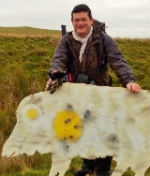 The unit is now part of my essential stalking kit and hangs from my binocular harness trap, the unit is supplied with a picatinny rail or quick release mount but as a bit of a purist I dislike the idea of pointing my rifle around unless actually firing it.
The unit is now part of my essential stalking kit and hangs from my binocular harness trap, the unit is supplied with a picatinny rail or quick release mount but as a bit of a purist I dislike the idea of pointing my rifle around unless actually firing it.
(Left: Simon Lee. To read more from Simon follow this link: how-much-gun-is-too-much-gun )



